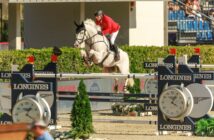by Ahmed Yousef,
Polo is one of the oldest and most prestigious sports in the world, combining strength, agility, and high coordination between the rider and the horse. This sport requires well-crafted strategies and precise tactics to achieve victory, especially with the speed and complexities of the game that demand players to be at their peak physical and mental readiness.
History of Polo
Polo originated thousands of years ago in Central Asia, initially serving as a training tool for warriors and cavalry. It soon spread to become a sport for the elite and aristocrats. In the modern era, polo has become an international sport played in many parts of the world, with particular popularity in countries like Argentina, the United Kingdom, and the United Arab Emirates.
Tactics in Polo
- Coordination Between Rider and Horse: The coordination between the rider and the horse is the most crucial element in polo. The rider must be able to direct the horse precisely, especially when changing directions quickly or accelerating to compete for the ball. This understanding between the rider and horse takes a long period of training to develop trust and coordination.
- Strategic Positioning: In polo, positioning is everything. Players need to know how to move to secure the right space for themselves and their team. Good players master the art of quickly reading the game and determining where they should be to assist in either attack or defense.
- Team Play and Communication: The team with the highest level of communication and coordination has a greater chance of winning. Using hand signals and verbal communication between players can help break through the opponent’s defenses and organize effective attacks.
- Defensive Positioning: Players must be aware of their defensive roles, whether it’s protecting teammates or chasing down opposing players. Knowing when to pressure the player with the ball and when to stay back to guard the goal is crucial.
- Fast Attacks: The speed of transitioning from defense to attack is one of the key traits of successful teams. It is preferable for the team to quickly move the ball and rush towards the goal before the opponent can reorganize their defense.
Best Winning Strategies
- Changing the Pace: One effective strategy in polo is changing the pace of the game, either by slowing it down or speeding it up. This confuses the opposing team and makes it difficult for them to predict your next move.
- Exploiting Mistakes: The team must be alert to the opponent’s mistakes and quickly exploit them to score. A mistake can be small, such as improper positioning, but it can turn into a big opportunity.
- Accurate Passing: Passing in polo requires precision and speed. Good passing allows players to bypass opponents and put teammates in good positions to score. Focusing on short and accurate passes rather than random long balls increases the chances of success.
- Adapting to the Opponent: Every opposing team has weaknesses, and it is important to identify and adapt to them. For example, if the opponent is slow in getting back on defense, this should be exploited through quick attacks.
- Managing Physical Fitness: Maintaining physical fitness throughout the match is key to success. Players must be aware of their energy levels and avoid early exhaustion, especially in long matches that require continuous effort from both players and horses.
The Role of the Horse in Polo
The horse is half of the team in polo and plays a vital role in tactics and strategies. The horse must have speed, strength, and maneuverability. Therefore, choosing the right horse and continuous training are among the most important factors for success in this sport. Riders often use more than one horse in a single match to ensure they have a fresh and ready horse for each chukka.
Polo is a blend of strength, tactics, and speed. To achieve victory, the team must work as one unit, utilizing good communication between players and coordination between the rider and horse. Successful strategies require careful planning, adaptability to the flow of the match and opponents, and taking advantage of every opportunity that arises during play.





